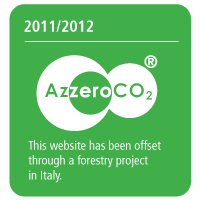Architecture
Architecture

“Med in Italy” is a house suited to the typical climate of the Mediterranean, especially to countries along the same latitude as Sicily, to its customs and traditions. In these climates, the envelope has to exploit the day-night difference in temperature to maintain a intermediate temperature inside the building and stop sunlight from entering. So in these climates traditional constructions are made of heavy masonry to take advantage of the structure’s thermal inertia. The “weight”, in other words the thermal mass (linked to material types and the building components chosen for the building envelope), determines the thermal inertia and as a result the ability of the wall to mitigate differences in the outside temperature (damping) inside the building, and later on let outdoor temperatures be felt inside (timeshift). This is why thick surfaces are traditionally part of Mediterranean architectures at least on the south, east and west façades and on the roof. Naturally the choice of inert material will depend on the type of house and its future inhabitants.

But mass alone is not enough. The effi ciency of the thermal mass in Mediterranean climates in the summer depends on natural ventilation. So suitable free cooling during the night will be incorporated using natural ventilation to “release” the heat accumulated by the walls during the day. This will be achieved by positioning suitably-sized openings in the building skin (permeability) using solutions that vary from winter to summer. We will also analyse possible forced ventilation techniques using natural solutions such as vertical shafts with suitable thermal capacity capable of absorbing solar energy during the day and creating a chimney effect - an updraft of air from inside the building during the night. At present the housing models imported from the north of Europe are highly impermeable to avoid heat dispersion. However in hot, humid Mediterranean climates this can cause deterioration of air quality inside the house, making it unhealthy. Only sophisticated mechanical ventilation systems can solve this problem, and we preferred to avoid using these systems. To assess the passive cooling strategies a dynamic simulation will be considered. An energy-saving and sustainable design must pay careful attention to ambient conditions and be able to “exploit” any resources provided by the environment. The outcome of this approach is, necessarily, an architecture - its form, type and materials – strongly infl uenced by its surroundings.

















